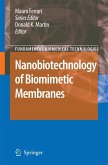Ever since the genesis of life, and throughout the course its further evolution, Nature has constantly been called upon to act as an engineer in solving technical problems. Organisms have evolved a variety of well-defined shapes and structures. Although often intricate and fragile, they can nonetheless deal with extreme mechanical loads. Some organisms live attached to a substrate; others can also move, fly, swim and dive. These abilities and many more are based on a variety of ingenious structural solutions. Understanding these is of major scientific interest, since it can give insights into the workings of Nature in evolutionary processes. Beyond that, we can discover the detailed chemical and physical properties of the materials which have evolved, can learn about their use as structural elements and their biological role and function. This knowledge is also highly relevant for technical applications by humans. Many of the greatest challenges for today's engineering science involve miniaturization. Insects and other small living creatures have solved many of the same problems during their evolution. Zoologists and morphologists have collected an immense amount of information about the structure of such living micromechanical systems. We have now reached a sophistication beyond the pure descriptive level. Today, advances in physics and chemistry enable us to measure the adhesion, friction, stress and wear of biological structures on the micro- and nanonewton scale. Furthermore, the chemical composition and properties of natural adhesives and lubricants are accessible to chemical analysis.
From the reviews: "Their book is a valuable addition to the literature on the micromechanics of very thin films ... . The discussion is exceedingly well organized and well illustrated; many examples are provided from biological systems ... . Overall, the authors have succeeded admirably in providing and informative and thorough text, the publisher has produced an attractive book, and readers will find much material of interest ... . I recommend it to anyone who works in the area of micromechanics of friction and lubrication." (Howard A. Stone, Physics Today, June, 2002)








